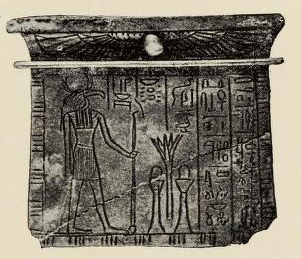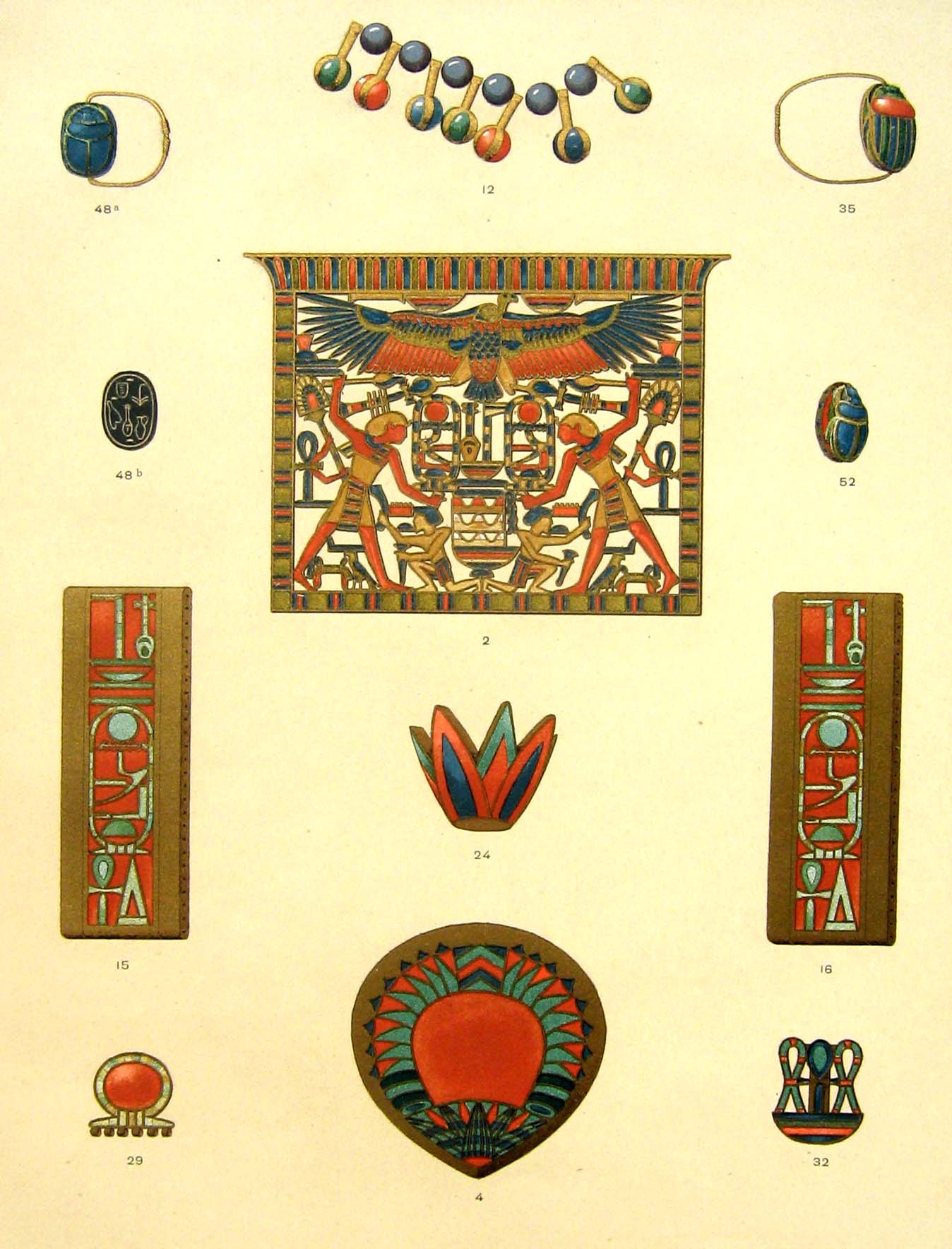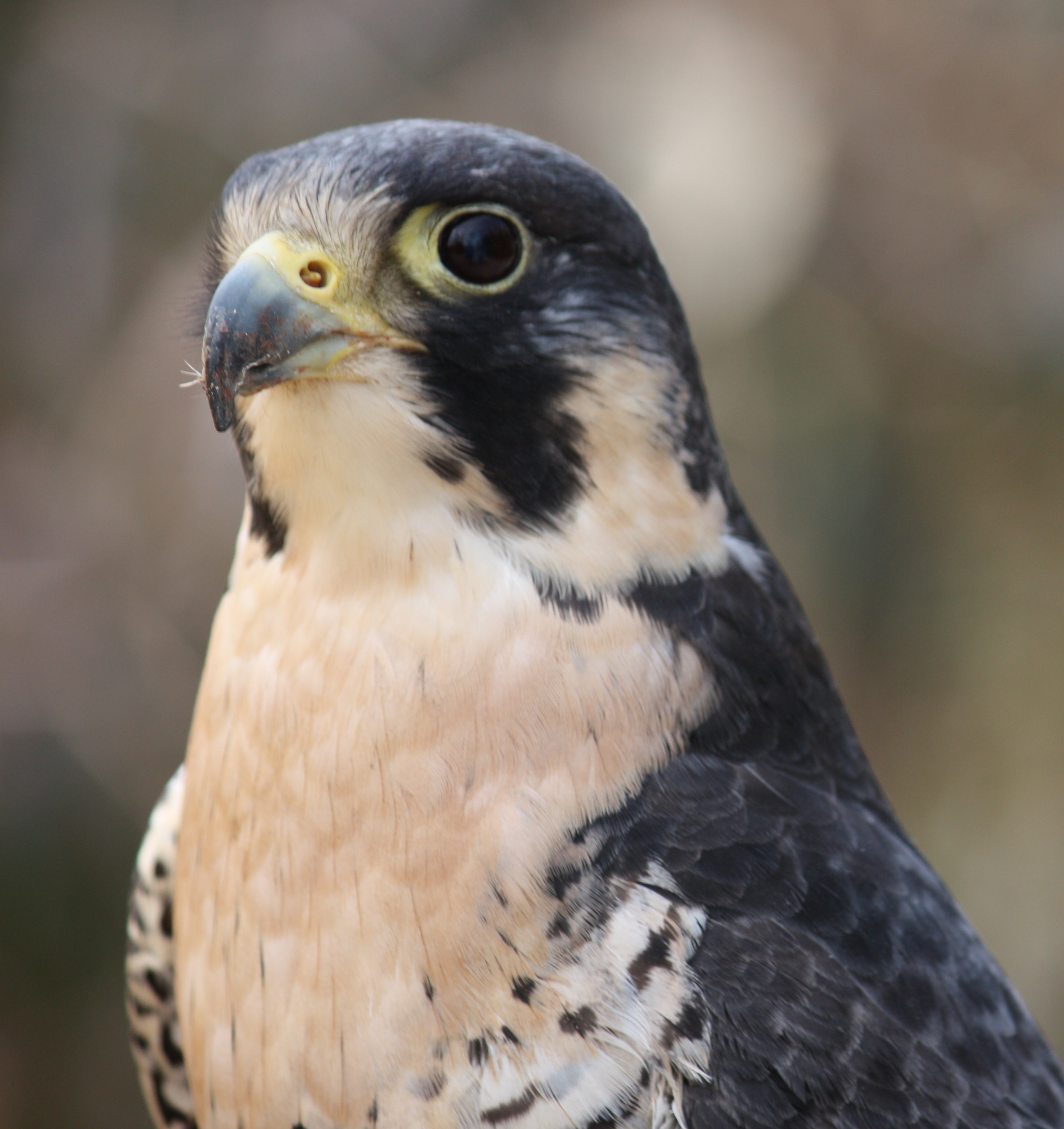|
Iuwlot
Iuwelot or Iuwlot was a High Priest of Amun at Thebes and military commander during the reign of pharaohs Osorkon I (reigned 922–887 BC) and Takelot I (reigned 885–872 BC) of the 22nd Dynasty. Biography As a son of Osorkon I, Iuwelot was brother of his predecessor Shoshenq C, of his successor Smendes III and of his contemporary king Takelot I. His earliest mention is on the so-called ''Stèle de l'apanage'', from which is known that Iuwelot was a youth in Year 10 of Osorkon I. His name appears later as High Priest of Amun on a Nile Level Text at Karnak (no. 16), dating to a Year 5 of an unknown pharaoh. Scottish Egyptologist Kenneth Kitchen argued that this king could not be Osorkon I, since it would implied that Iuwelot was already ''High Priest'' and ''Army commander of the South'' very early in his life; Kitchen thought it was much more likely that the unnamed pharaoh was Takelot I, and thus that Iuwelot must have been around 40 years old when he was appointed with such t ... [...More Info...] [...Related Items...] OR: [Wikipedia] [Google] [Baidu] |
Theban High Priests Of Amun
The High Priest of Amun or First Prophet of Amun (''wikt:ḥm#Egyptian, ḥm wikt:nṯr#Egyptian, nṯr wikt:tpj#Egyptian, tpj n wikt:jmn#Egyptian, jmn'') was the highest-ranking priest in the priesthood of the ancient Egyptian deities, ancient Egyptian god Amun. The first high priests of Amun appear in the New Kingdom of Egypt, at the beginning of the Eighteenth Dynasty of Egypt, Eighteenth Dynasty. History The priesthood of Amun rose in power during the early Eighteenth dynasty through significant tributes to the god Amun by ruler such as Hatshepsut and more importantly Thutmose III. The Amun priesthood in Thebes had four high-ranking priests: * The Chief Prophet of Amun at Karnak (''ḥm nṯr tpj n jmn''), also referred to as the Chief Priest of Amun. * The Second Prophet of Amun at Karnak (''ḥm nṯr snnw n jmn''), also referred to as the Second Priest of Amun. * The Third Prophet of Amun at Karnak (''ḥm nṯr ḫmtnw n jmn khemet-nu''), also referred to as the Third Prie ... [...More Info...] [...Related Items...] OR: [Wikipedia] [Google] [Baidu] |
Shoshenq C
Shoshenq C was the eldest son of the 22nd Dynasty pharaoh Osorkon I and queen Maatkare, and served as the High Priest of Amun at Thebes during his father's reign. Consequently, he was the most important official in Upper Egypt after the king himself. He has generally been equated with Heqakheperre Shoshenq II by the English Egyptologist Kenneth Kitchen and viewed as a short-lived co-regent to his father based on the Nile God British Museum statue 8 which identifies him as the son of Osorkon I and Queen Maatkare, daughter of Hor-Psusennes. In the statue, Shoshenq C is called "the Master of the Two Lands" and the formula "beloved of Amun" is enclosed within a royal cartouche. However, in the text of the statue, he is not given a specific throne name or prenomen, the use of a cartouche by a royal prince is attested in other periods of Egyptian history such as that of Amenmes, son of Thutmose I, and the documents depicts Shoshenq C as a simple High Priest of Amun on the side of the ... [...More Info...] [...Related Items...] OR: [Wikipedia] [Google] [Baidu] |
Pectoral Wasakawasa Petrie , a bird
{{disambig ...
Pectoral may refer to: * The chest region and anything relating to it. * Pectoral cross, a cross worn on the chest * a decorative, usually jeweled version of a gorget * Pectoral (Ancient Egypt), a type of jewelry worn in ancient Egypt * Pectoralis major muscle, commonly referred to as "pectorals" or "pecs" * Pectoralis minor muscle * Pectoral fins of an aquatic animal, such as a whale or fish, located on both sides of the body * Pectoral sandpiper The pectoral sandpiper (''Calidris melanotos'') is a small, migratory wader that breeds in North America and Asia, wintering in South America and Oceania. It eats small invertebrates. Its nest, a hole scraped in the ground and with a thick linin ... [...More Info...] [...Related Items...] OR: [Wikipedia] [Google] [Baidu] |
9th-century BC Religious Leaders
The 9th century was a period from 801 ( DCCCI) through 900 ( CM) in accordance with the Julian calendar. The Carolingian Renaissance and the Viking raids occurred within this period. In the Middle East, the House of Wisdom was founded in Abbasid Baghdad, attracting many scholars to the city. The field of algebra was founded by the Muslim polymath al-Khwarizmi. The most famous Islamic Scholar Ahmad ibn Hanbal was tortured and imprisoned by Abbasid official Ahmad ibn Abi Du'ad during the reign of Abbasid caliph al-Mu'tasim and caliph al-Wathiq. In Southeast Asia, the height of the Mataram Kingdom happened in this century, while Burma would see the establishment of the major kingdom of Pagan. Tang China started the century with the effective rule under Emperor Xianzong and ended the century with the Huang Chao rebellions. While the Maya experienced widespread political collapse in the central Maya region, resulting in internecine warfare, the abandonment of cities, and a northward ... [...More Info...] [...Related Items...] OR: [Wikipedia] [Google] [Baidu] |
10th-century BC Religious Leaders
1 (one, unit, unity) is a number representing a single or the only entity. 1 is also a numerical digit and represents a single unit of counting or measurement. For example, a line segment of ''unit length'' is a line segment of length 1. In conventions of sign where zero is considered neither positive nor negative, 1 is the first and smallest positive integer. It is also sometimes considered the first of the infinite sequence of natural numbers, followed by 2, although by other definitions 1 is the second natural number, following 0. The fundamental mathematical property of 1 is to be a multiplicative identity, meaning that any number multiplied by 1 equals the same number. Most if not all properties of 1 can be deduced from this. In advanced mathematics, a multiplicative identity is often denoted 1, even if it is not a number. 1 is by convention not considered a prime number; this was not universally accepted until the mid-20th century. Additionally, 1 is ... [...More Info...] [...Related Items...] OR: [Wikipedia] [Google] [Baidu] |
People Of The Twenty-second Dynasty Of Egypt
A person ( : people) is a being that has certain capacities or attributes such as reason, morality, consciousness or self-consciousness, and being a part of a culturally established form of social relations such as kinship, ownership of property, or legal responsibility. The defining features of personhood and, consequently, what makes a person count as a person, differ widely among cultures and contexts. In addition to the question of personhood, of what makes a being count as a person to begin with, there are further questions about personal identity and self: both about what makes any particular person that particular person instead of another, and about what makes a person at one time the same person as they were or will be at another time despite any intervening changes. The plural form "people" is often used to refer to an entire nation or ethnic group (as in "a people"), and this was the original meaning of the word; it subsequently acquired its use as a plural form of per ... [...More Info...] [...Related Items...] OR: [Wikipedia] [Google] [Baidu] |
Petrie Museum
The Petrie Museum of Egyptian Archaeology in London is part of University College London Museums and Collections. The museum contains over 80,000 objects and ranks among some of the world's leading collections of Egyptian and Sudanese material. History The museum was established as a teaching resource for the Department of Egyptian Archaeology and Philology at University College at the same time as the department was established in 1892. The initial collection was donated by the writer Amelia Edwards. The first Edwards Professor, William Matthew Flinders Petrie, conducted many important excavations, and in 1913 he sold his collections of Egyptian antiquities to University College, creating the Flinders Petrie Collection of Egyptian Antiquities, and transforming the museum into one of the leading collections outside Egypt. The collection was first put on display in June 1915. Petrie excavated dozens of major sites in the course of his career, including the Roman Period cemete ... [...More Info...] [...Related Items...] OR: [Wikipedia] [Google] [Baidu] |
Hermopolis
Hermopolis ( grc, Ἑρμούπολις ''Hermoúpolis'' "the City of Hermes", also ''Hermopolis Magna'', ''Hermoû pólis megálẽ'', egy, ḫmnw , Egyptological pronunciation: "Khemenu"; cop, Ϣⲙⲟⲩⲛ ''Shmun''; ar, الأشمونين) was a major city in antiquity, located near the boundary between Lower and Upper Egypt. A provincial capital since the Old Kingdom of Egypt, Hermopolis developed into a major city of Roman Egypt, and an early Christian center from the third century. It was abandoned after the Muslim conquest but was restored as both a Latin Catholic (meanwhile suppressed) and a Coptic Orthodox titular see. Its remains are located near the modern town of el Ashmunein (from the Coptic name) in Mallawi, Minya Governorate, Egypt. Name ''Khemenu'' ('), the Egyptian language name of the city, means "Eight-Town", after the Ogdoad, a group of eight "primordial" deities whose cult was situated there. The name survived as Coptic ''Shmun'', from which the ... [...More Info...] [...Related Items...] OR: [Wikipedia] [Google] [Baidu] |
Thoth
Thoth (; from grc-koi, Θώθ ''Thṓth'', borrowed from cop, Ⲑⲱⲟⲩⲧ ''Thōout'', Egyptian: ', the reflex of " eis like the Ibis") is an ancient Egyptian deity. In art, he was often depicted as a man with the head of an ibis or a baboon, animals sacred to him. His feminine counterpart was Seshat, and his wife was Ma'at. He was the god of the moon, wisdom, writing, hieroglyphs, science, magic, art, and judgment. His Greek equivalent is Hermes. Thoth's chief temple was located in the city of Hermopolis ( egy, ḫmnw , Egyptological pronunciation: "Khemenu", cop, Ϣⲙⲟⲩⲛ ''Shmun''). Later known as ''el-Ashmunein'' in Egyptian Arabic, the Temple of Thoth was mostly destroyed before the beginning of the Christian era, but its very large pronaos was still standing in 1826. In Hermopolis, Thoth led "the Ogdoad", a pantheon of eight principal deities, and his spouse was Nehmetawy. He also had numerous shrines in other cities. Thoth played many vital and promin ... [...More Info...] [...Related Items...] OR: [Wikipedia] [Google] [Baidu] |
Pectoral (Ancient Egypt)
The pectorals of ancient Egypt were a form of jewelry, often represented as a brooch. These were mostly worn by richer people and the pharaoh. One type is attached with a nah necklace, meant to be suspended from the neck but to lie upon the breast. Statuary from the Old Kingdom onwards shows this form. A later form was attached as a brooch, with the thematic, iconographic function and statement outweighing its actual use as a piece of jewellery for adornment. The thematic statements were typically about the pharaoh or statements of ancient Egyptian mythology and culture. They are usually of gold with cloisonné inlays of gemstones. Ancient Egyptian definition of pectoral The many determinatives for ''pectoral'' are not portrayed in the Gardiner's Sign List. However, one of the 10 words for 'pectoral', or 'collar' uses the Usekh collar determinative, S11, the ''"collar necklace"'' S11. However a similar hieroglyph for the verb "to collar", "to net" shows the relationship betwe ... [...More Info...] [...Related Items...] OR: [Wikipedia] [Google] [Baidu] |
Electrum
Electrum is a naturally occurring alloy of gold and silver, with trace amounts of copper and other metals. Its color ranges from pale to bright yellow, depending on the proportions of gold and silver. It has been produced artificially, and is also known as "green gold".Emsley, John (2003Nature's building blocks: an A–Z guide to the elements Oxford University Press. . p. 168 Electrum was used as early as the third millennium BC in Old Kingdom of Egypt, sometimes as an exterior coating to the pyramidions atop ancient Egyptian pyramids and obelisks. It was also used in the making of ancient drinking vessels. The first known metal coins made were of electrum, dating back to the end of the 7th century or the beginning of the 6th century BC. For several decades, the medals awarded with the Nobel Prize have been made of gold-plated green gold. Etymology The name "electrum" is the Latinized form of the Greek word ἤλεκτρον (''ḗlektron''), mentioned in the ''Odyssey' ... [...More Info...] [...Related Items...] OR: [Wikipedia] [Google] [Baidu] |
Ra-Horakhty
Ra (; egy, wikt:rꜥ, rꜥ; also transliterated ; cuneiform: ''ri-a'' or ''ri-ia''; Phoenician language, Phoenician: 𐤓𐤏,Corpus Inscriptionum Semiticarum, CIS I 3778 romanized: rʿ) or Re (; cop, ⲣⲏ, translit=Rē) was the ancient Egyptian solar deity, deity of the sun. By the Fifth Dynasty of Egypt, Fifth Dynasty, in the 25th and 24th centuries BC, he had become one of the most important gods in ancient Egyptian religion, identified primarily with the noon, noon-day sun. Ra ruled in all parts of the created world: the sky, the earth, and the Duat, underworld. He was the god of the sun, order, kings and the sky. Ra was portrayed as a falcon and shared characteristics with the sky-god Horus. At times the two deities were merged as Ra-Horakhty, "''Ra, who is Horus of the Two Horizons''". In the New Kingdom, when the god Amun rose to prominence he was fused with Ra as Amun-Ra. The cult of the Mnevis bull (mythology), bull, an embodiment of Ra, had its center ... [...More Info...] [...Related Items...] OR: [Wikipedia] [Google] [Baidu] |



_1938.jpg)



.jpg)
